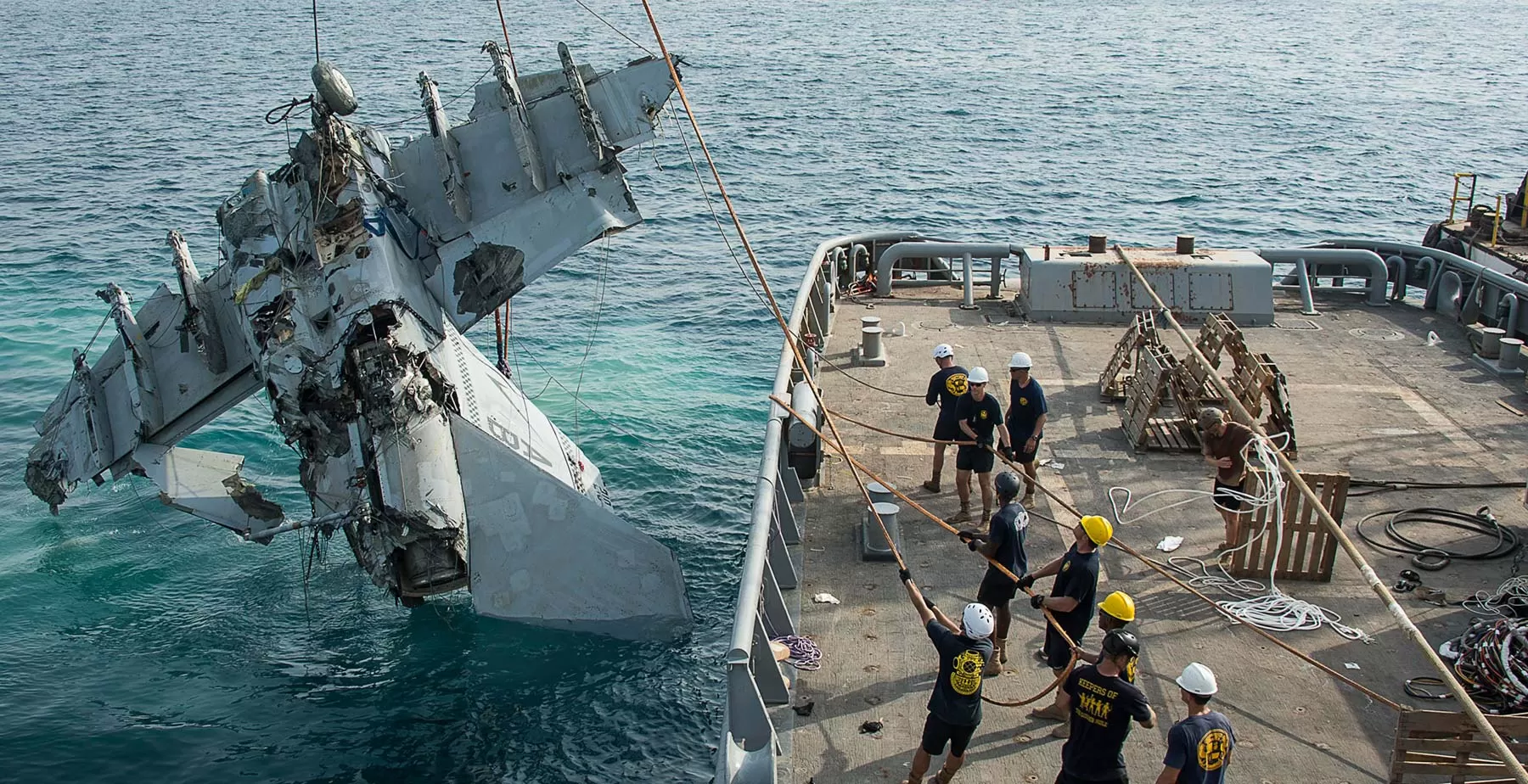I was thinking about that point that people bring up about military spending with the US and Im getting suspicious that the actual money spent on the US military is a mirage suggesting a capability that far far surpasses the capabilities of the next 10 near peers of the USA.
Something just doesnt add up.
The US has spent trillions on its military yet NATO and the US is having a tough time making the fight against Russia trivial.
If the money spent is any indication of capability; then it follows that besting Russia in Ukraine should be trivial. But that is not the case.
You see… I can understand designing weapons in order to kill and win wars which Im sure that is the principles of Russian and Chinese philosophy in warfare.
But what if the US is doing that… But also allowing the profit motive to have a say? Im starting to think that the USA is blowing money on overvalued systems that are AT BEST, MAYBE a tiny bit more effective than the oppositions’ weapons.
It aint like Ukraine was short of capable fighters with covert NATO training and backing.
For all the trillions spent on NATO; Ukraine should have settled this conflict months ago. Ukraine should have defeated the Donbas rebellion before it could even find its footing.
For real though. What the fuck? Is the west genuinely a paper tiger in the most real sense?
Consider also colonial projects like Isntreal. With all their backing from the US; they havent managed to just bulldoze Palestine into the phantom realm. They STILL have to put in effort.
It’s just very strange… The realities don’t match up with the money or the talk.
The only way it makes sense is if the west develops weapons for profit first and foremost, which doesnt always mean the highest quality.
You have to remember that US military spending is so high because it makes money for the military industrial complex and therefore the oligarchs who own it and the nation. Because it is a money making tool before it is a legitimate supply chain, the markups/margins are insane. The US pays 10× more for each missile/spoon/bullet/etc with its profit motive system, than for instance China with its planned, at cost system. So really the US military only appears to have 1t yearly value when it’s more like 100b a year.
Tldr, yes, paper tiger.
Back in 2016 Bernie fucking Sanders pointed out that the US military pays around $20,000 apiece for simple parts you can buy for about five bucks at any hardware store. It only gets worse from there. For example, F-35 production is spread out all over the country – for political reasons, i.e., sweet kickbacks from local governments – causing a massive increase in costs. It doesn’t result in a decent plane, but it does beef up Lockheed’s bottom line.
I think you meant kickbacks not cutbacks
Oops, fixed
What is so absurd in my view about military supply contracts is that they’re often cost plus a certain relatively small (on paper) profit margin. The official profit margin can be small because the “cost” is defined by the supplier over the course of the project. So “cost overruns” and “delays” are obviously within the interest of the supplier because then they get paid more.
Something to tease out from the other comments and the OP, and to make explicit…
There is an assumption that militaries are designed to ‘win’ and that wars are fought to ‘be won’.
A lot of war stories, especially those about medieval wars and those concerning WWI and WWII give this impression.
But what does it mean to ‘win’ a modern war? What would that look like in Afghanistan, Libya, Yemen, Palestine, Vietnam, Korea, Ukraine, etc?
In medieval England, things might seem a bit clearer. Like, Alfred the Great defeating the Danes. Or Ceaser conquering gaul. Or Alexander the Great slaughtering everyone between Greece and India. Or the Greeks burning Troy. These are relatively clear cut – at least in the popular way that we learn about these wars.
But in modern times? When the reasons for war are so murky and the people conducting them hide behind logos and smokescreens? When the people conducting the wars lie about or simply never admit to being involved?
The destruction is the point. The longer the war, the more weapons sold. Or, rather, the more opportunities to sell weapons that don’t even need to make it to the front lines. The more destructive the war, the more contracts available afterwards to rebuild what was destroyed.
And beyond these obvious financial benefits that come from just blowing shit up, the simple fact of an ongoing war comes with a lot of other types of moneymaking:
- selling war movies, series, games, and books
- making journalistic careers
- selling papers
- having a sensational narrative to keep the news cycle interesting
- justification for hiking the price of gas
- justification for hiking other prices
- distraction from the domestic problems in other countries (sorry, we can’t fix this or that problem, don’t you know there’s a war on?)
- making people thankful for a large military budget
- etc
It seems to me that even if the US spent $1tr on its military at cost, it would still not try to finish it’s wars quickly. There’s too much money to be made in the process.
Great point and definitely needs to be pointed out much more. People are still so confused how the US couldn’t ‘win’ in Afghanistan in 20 years, despite the trillions spent. It isn’t despite the trillions, it fought because of those trillions spent. In that sense it did ‘win’. Additionally Keeping the domestic population shocked and distracted in a permanent state of war makes neoliberal reforms there easier too.
But what does it mean to ‘win’ a modern war?
Weirdly imo in Ukraine US’ goals are much more clear than in previous wars and also clearer than Russia’s. For the US I can make out a win condition, for Russia I really can’t.
For someone still confused about the US goals in Ukraine :
U.S. Announces $2.98 Billion in Aid to Ukraine
$2.8 Billion in Additional U.S. Military Assistance for Ukraine
In addition to the profitability first in the destruction phase and then in the rebuilding phase (if it ever comes), there is also the benefit of keeping territory too unstable for anyone else to profit from (“If I can’t have it no one can”), and a dual benefit of (1) causing your “ally” to become more and more destroyed so they become more and more dependent on you financially and lose their sovereignty, and if you ever rebuild they will become a fountain of wealth for you, and (2) tying up your enemy’s resources in the battle siege-style, also using sanctions, to create economic problems in your enemy’s country which can escalate into political problems there (which you can exploit for color revolution if you have penetration there, whether it’s via media or covert agents).
Going by the internally discussed doctrines of the US, the main thing the US wants to avoid is a hot war on their own soil that uses up or kills too much of their own population and resources. Everything else is basically worth it for them whenever they can get away with it. That is to say, in the eyes of the US ruling class, it is pretty much always worth it to fuck up another country that isn’t in a position to retaliate, it’s mainly a matter of degree of how much benefit they can get out of it; the question of whether they will benefit is almost always a “yes”, so the only real questions are “who specifically will benefit?” and “What kind of benefit will it be?” (e.g. it may be raw immediate profits for certain companies/industries, it may be a geostrategic general benefit to their overall hegemony, it may be all of the above)
Intended effect on the big enemy the US is battling through siege and proxy wars
The thrust of American foreign policy, therefore, should be to inflict a series of defeats, however minor, on the Soviets. This is the significance of our support, or lack thereof, of liberation movements in Angola, Nicaragua, Afghanistan, and wherever else they emerge. The success of such rebellions would bring into question the basic assumption of all Leninist parties as to their “historic mission”, and their inevitable victory. Only in this way can the possibility of “liberalization” become a reality. (–Neoconservative journalist Irving Kristol)
Afghanistan represented the clearest example that the Reagan Doctrine is aimed both at Third World nations and at the USSR. The United States spent at least $625 million to finance the Afghan insurgency against the Soviet-allied Afghan government. This money assisted in tying down Soviet troops in Afghanistan, thereby creating both an economic drain and a major internal political problem for the Soviets. … The Reagan Doctrine is also looking for specific successes in rolling back particular Third World nations. Its goal of international counterrevolution faithfully articulates the recommendations contained within the Heritage Foundation’s Mandate for Leadership II that call for developing a coordinated “low intensity warfare” policy to deal with “Soviet and Soviet proxy involvement in the developing world.” (–the book “Rollback”)
Intended effect on the country thrown into the line of fire (doesn't matter if they are an "ally" or not, when destruction and opening the country for the US to profit is the point, and/or trying to make the country a no-go zone for anyone and/or use it to drain a different country's resources in defending or fighting it)
Americans go to Nicaragua, they’re welcome there, they go by the dozens of thousands to witness, to document these things. Eight thousand people killed, all civilians, killed. Mostly women and children. And this is a deliberate technique of the CIA, it’s part of crippling a country, it’s part of forcing it, traumatizing it, paralyzing it, until it grinds to a halt, until you’ve broken it completely, and then, as Reagan would dream, you can put in the marines eventually, and people will welcome the marines as they hand out care packages from their trucks because they’re so crushed and so desperate that anything would make them feel better. … They’re trying to create conditions in Nicaragua, they have in northern Nicaragua for five years, where the farmer can’t get his produce to market, where children can’t go to school, where the government administration of the country grinds to a halt, where hospitals are treating wounded people instead of sick people where international capital is is scared off, as John was saying so very very well. The techniques are raw terrorism. (–former CIA officer John Stockwell)
Sorry these quotes are from the 80s, I’m doing some research on that period rn so that’s what I have on hand.
I may be off with my analysis here, this is just how I think of it. Roughly, I think of whether a country is completely greenlit for US profit and domination, whether it’s at a yellow light (US is working on opening it up or using it as cannon fodder, all kind of chaos ensues here and profits are slowed, prospective, or unstable except for in things like the arms industry or drug trafficking), or whether its a red light (closed to US profit and therefore on the list of countries to destroy and pry open by any means possible).
These are good points.
And the quotes are useful, thanks.
Since the 90s NATO’s doctrine has become increasingly focused on counter-insurgency, favouring decentralization of military leadership, weapons and technologies that favour attacking cells rather than fronts, etc.
This explains NATO’s complete failure to get a win in Ukraine.
NATO is in the process of retooling to better meet the challenge of Russia and China, this is most evident in the US and the UK. And of those two, it’s far more evident in the former. If Russia had waited just another year or two the war in Ukraine would be going differently.
Though we also have to mention, prolonged states of war are highly profitable to the military-industrial complex. 20 years of Afghanistan made a small handful of people billions of dollars, they like when conflicts get drawn out. The longer a military needs to be supplied, the longer the warmongers get paid. If all of NATO’s conflicts ended today, the entire military industry would collapse under its own weight.
The genocide of Palestine can’t and won’t end until the MIC is dismantled, the same is/was true of the genocide in the Donbas and of the war on terror.
Military spending being so high isn’t for the production of weapons, it’s so oligarchs can get paid.
I say this all the time but people don’t want to hear it. The US military is at least a hundred times over value for the budget. Probably over a thousand. It’s a racketeering operation. We all know this but we don’t connect the dots that this would severely hinder military capability. How much does the US have to spend to to get something done, how much would Russia or China have to pay to do the same thing? Look at Ukraine. The US spent the entire Russian budget on their little war and to what effect? Russia was able to remain in control of the situation with very minor limited operations.
Not only that but the US has too many military obligations. It’s got its hands in too many places how much of the US’s capacity occupied with it’s many projects. People talk about the US military as if it was actually able to use it, but it can’t pay too much attention to one project without jeopardizing its thousand other schemes.
That is the other thing. It’s potentially spread too thin. Even if the US tried to focus directly on China; they would NOT be able to do something like stop Iran or Russia or hell, any local uprising overthrowing compradores in the moment.
Seriously; to hell with the USA.
One thing about our military spending that a lot of people don’t understand is that a lot of it is purposefully wasted to be used as a job program. We build planes and tanks that we never plan on using because someone in Congress doesn’t want to be the reason the plant gets shut down, especially since most of them are the only thing keeping rural towns afloat. The vast majority of it is just a racket that can’t be shut down without destroying entire towns. This is also why our prisons will never get shut down. Our rural towns used to be where a lot of our manufacturing was done, with a single factory being where almost everyone worked. Now, it’s almost all just prisons, wasted manufacturing in our military budget, and Walmarts.
Yes. Absolutely. A planned military economy led to the USSR being able to pump out tanks for instance at an unprecedented scale, because every part, every missile, every machine gun was made with the express purpose of working within the same machine and with state oversight. Here, you’ve got several different military manufacturers making separate parts of each machine. Sometimes these manufacturers don’t get along. Sometimes their specs are incorrect and machine parts literally do not work for the model they’re working on. And just like every other industry in this shithole, the military economy is primarily focused on speculation and price means utterly nothing when it comes to the actual efficacy of weaponry.
https://nationalinterest.org/blog/buzz/f-35-would-you-spend-1500000000000-plane-cant-fly-104587
For a case study, this is one of if not the most expensive project the U.S. military is working on, the F-35, and it’s an unmitigated disaster.
US navy plane landing:

But what if the US is doing that… But also allowing the profit motive to have a say? Im starting to think that the USA is blowing money on overvalued systems that are AT BEST, MAYBE a tiny bit more effective than the oppositions’ weapons.
Ever heard of the F-35 Lightning? Originally touted as America’s next generation jet fighter, a multirole monster decked out with the latest in cutting edge capabilities, the project to develop, manufacture and service this jet has massively underperformed and is still riddled with flaws, some of which are enormous. These jets have been known to simply fall out of the sky due to catastrophic engine failure, that’s just how big of a problem this plane has. This gargantuan fuck up of a project has cost the US taxpayer more than $1.5 trillion, much of which is simply because the Pentagon is saddled with an institutional form of the sunk cost fallacy; that so much of the Pentagon’s budget and other related expenses are now tied up in the F-35 that to bin off the project would have enormous ramifications for the military industrial complex in general. Lockheed Martin makes enormous bank off of their contracts with the military to develop this hopeless jet fighter. To me, the Lightning is emblematic of the issue with modern, “high-tech” warfare.
Most of these over-engineered monstrosities are either hopelessly overcomplicated and delicate pieces of machinery that are prone to failure, or else their complexity is such that refits and maintenance takes far too long and the extremely involved production processes necessary to produce them means that if the whole pre-war stockpile are knocked out of action the turn around on replacing them can be anywhere from a year to 2 years. Naturally, no army can realistically hope to wait that long for new tanks and jets. Its the same general principle of industrial warfare as the T-34 vs the Panther during WW2. By all accounts, the Panther was the superior tank. However, T-34s were far simpler to produce at scale, and consequently outnumbered the Panther on an enormous scale. The specs and operational efficiency of a given unit doesn’t mean much if you simply can’t produce enough units for your operational needs. It was a significant factor in the WW2 struggle between Fascism and Socialism, and it remains so now.
T-34 vs the Panther during WW2. By all accounts, the Panther was the superior tank. However, T-34s were far simpler to produce at scale, and consequently outnumbered the Panther on an enormous scale.
this actually a myth the T-34 was by far the most superior tank in WW2, similar to the propaganda about the Russians just hurling waves of barely armed soldiers at the Germans, the t-34 then became “oh they made alot of cheap crappy tanks and threw them at the germans”. Originally they used to say the American sherman was better because the british had no tanks and basically had to borrow all of theirs, but when american officers started to come out and say “hell no our tanks sucked” they changed the propaganda to just say the German panther was better, for such obscure reasons as “they had better training” and a “more spacious cabin”. However even the nazi generals at the time often remarked how the T-34 was hands down the best tank in the war and enjoyed vast superiority on the battle field. Not only did the soviets produce the T-34 because it was the best but they also stole everyone elses tank designs and made their own copies to practice against. If they wanted to build a panther they very easily could’ve.
same narratives that we aren’t capable of innovation
You’re 100% correct. The military isn’t free from neoliberal attacks and privatization efforts any more than other government institutions. Rumsfeld in a speech on 10th September 2001 explicitly announced this push to privatize it, to attack its “bureaucracy with its 5 year central plans”, etc. This new doctrine directly led to the most famous of the privateers profiting from this - Halliburton and Blackwater. Combined with a private MIC this creates the same bloat we see everywhere today.
Despite this the military still remains one of the core functions of the modern US state that isn’t quite privatized (as opposed to eg healthcare), meaning whoever supplies that military necessarily controls the largest remaining function of the state. Thus the MIC has an inbuilt control over the state as it ensures one of its core functions. And the state has a vested interest in keeping that MIC going.
The “defence industry” having this control and contractors with their mono-/oligopol position do what they always do - rack up prizes. Combined with high production costs in Western countries you get absurd costs.
Examples are the mentioned F35 project, but even HIMARS, the M777, US drones. Compare the prices of these to those of comparable capabilities produced elsewhere. Iranian drones or even Bayraktars cost a fraction. Russian artillery also likely costs a fraction of the extremely overteched US stuff. Germany eg has similar problems. Its defence budget is one of the largest in the world, it has one of the largest arms industries and yet the Bundeswehr is barely able to function at all. Not exaggerating either. They have almost no functional tanks, helicopters or aircraft. The government has had multiple debacles procuring arms contracts. From the G36, its successor, transport planes, the Eurohawk, modernization of the navy’s officer training ship, etc. All of them financial disasters.
Same with the current conflict. That’s why all of NATO combined can’t even supply a proxy properly for a year, they’re just too depleted.
That said, for the US specifically it doesn’t mean it’s a papertiger. Its budget is so high because it is used that much. As @Drstrange2love said, sending a soldier abroad for even a day is incredibly expensive and the US has hundreds of bases, constantly deployed aircraft carriers groups, etc. Just compare the size of the US airforce and its navy, especially its carrier fleet, to that of any country in the world. The difference is staggering and that is real stuff. I still doubt it could sustain a prolonged conventional war for long.
This is my guess as well. Im not or hopefully not insinuating that the US is incapable of spectacular warfare damage. And you are correct. Deployment and movement is expensive. But once again, it does call into question its capability overall compared to its peer rivals.
Right now… It’s hard for me to say that the US could defeat China on a total war if nukes were absolutely off the table. Something tells me the US war machine would run out of gas pretty quickly. 🤔
deleted by creator
I know as a matter of fact that in the military, very little of that money is going into ships, buildings or paychecks. So whose to say what all that military spending is really contributing towards.
They’ve spent the better part of 70 years fighting enemies that are technically inferior with vastly smaller mechanized capabilities and basically losing in the long-term every time. The military industry in the US is a racket just like everything else in the US.
You’re entirely right, the weapons are developed for profit. The entire system is designed to make a couple people rich, not to create the best fighting organization the world has ever seen. All you really need to know to come to that conclusion is that the US military has never been audited. Audits have been attempted, and they have failed.
Edit: another important thing to mention is the US uses military spending abroad to enforce USD hegemony as a global reserve currency. It’s in the economic interest of the US in terms of international relations to have an expensive military presence abroad.
Once I read somewhere, that USA weapon making is not that great, and they just throw money at their problems. 30% of their weaponry is effective, and they just use the money to cover the colossal gap between effective weapon numbers, and total weapon volume that would actually work reliably.
It seems to be not profit, but lack of potential in the first place. I mean look how had they sucked at Vietnam or Iraq. Their tactical ops and weaponry making is a joke from what I see.
have to remember the size of the american army is gigantic in size and with bases around the world maintaining all personnel and equipment is expensive in addition to contracts and development which is private which is more money going to private companies, so a good part of the budget goes just to Maintenance like that.
none of us can know for certain. but i certainly hope it is. just remember to not underestimate it.











